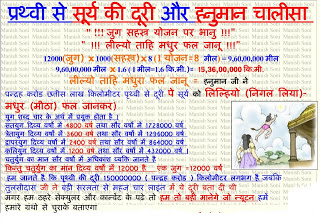
![Keep your mind stable in sorrow, happiness, anxiety, anger, passion and fear and become a "STABLE MINDED" saint and attain Brahman [Liberation].
Om Tat Sat](https://scontent-b-dfw.xx.fbcdn.net/hphotos-xpf1/v/t1.0-9/s480x480/10363602_806012282798086_4925616471017711601_n.jpg?oh=080f2d91fd9e9f13570d5694618e2118&oe=556267CB) About REBIRTH in Shrimad Bhagvat Gita
पार्थ नैवेह नामुत्र विनाशस्तस्य विद्यते।
न हि कल्याणकृत्कश्चिद्दुर्गतिं तात गच्छति॥
श्री भगवान् बोले- हे पार्थ! उस पुरुष का न तो इस लोक में नाश होता है और न परलोक में ही। क्योंकि हे प्यारे! आत्मोद्धार के लिए अर्थात भगवत्प्राप्ति के लिए कर्म करने वाला कोई भी मनुष्य दुर्गति को प्राप्त नहीं होता।(गीता:6:40)
The Lord tends to explain Arjuna about any man who walks on a path to reach the Almighty.
Lord says, "Oh Parth (Arjuna)! A man who walks on the path to reach God never gets destroyed either in this world or in the divine world(s) [after this world]. Oh Beloved! It is so because, a man who works for the purpose of attaining absolution/emanicipation i.e. attaining God, never falls or attains misery.
(Gita:6:40)
About REBIRTH in Shrimad Bhagvat Gita
पार्थ नैवेह नामुत्र विनाशस्तस्य विद्यते।
न हि कल्याणकृत्कश्चिद्दुर्गतिं तात गच्छति॥
श्री भगवान् बोले- हे पार्थ! उस पुरुष का न तो इस लोक में नाश होता है और न परलोक में ही। क्योंकि हे प्यारे! आत्मोद्धार के लिए अर्थात भगवत्प्राप्ति के लिए कर्म करने वाला कोई भी मनुष्य दुर्गति को प्राप्त नहीं होता।(गीता:6:40)
The Lord tends to explain Arjuna about any man who walks on a path to reach the Almighty.
Lord says, "Oh Parth (Arjuna)! A man who walks on the path to reach God never gets destroyed either in this world or in the divine world(s) [after this world]. Oh Beloved! It is so because, a man who works for the purpose of attaining absolution/emanicipation i.e. attaining God, never falls or attains misery.
(Gita:6:40)














"With a single fragment of My Power (Yogashakti) I pervade and support this entire Universe"
---------- Shri Krishna (Ishvar) in the Gita: 10: 42
"मैं इस सम्पूर्ण जगत को अपनी योगशक्ति के एक अंश मात्र से धारण करके स्थित हूँ"
----------श्री कृष्ण [ईश्वर]: श्रीमद्भगवद्गीता: 10: 42
!["With a single fragment of My Power (Yogashakti) I pervade and support this entire Universe"
---------- Shri Krishna (Ishvar) in the Gita: 10: 42
"मैं इस सम्पूर्ण जगत को अपनी योगशक्ति के एक अंश मात्र से धारण करके स्थित हूँ"
----------श्री कृष्ण [ईश्वर]: श्रीमद्भगवद्गीता: 10: 42](https://fbcdn-sphotos-h-a.akamaihd.net/hphotos-ak-xap1/v/t1.0-9/s480x480/10626851_750798471652801_8164088555394104927_n.jpg?oh=92ea095816d83b0da023e796180f961f&oe=552C06AF&__gda__=1428972785_bbe5ce3e183b6200c2096f211ed8e518)







































Are we really taught that we have the right to perform our prescribed duties and not entitled to the fruits of action. No rituals I remember from childhood has taught me this until I came accross self. I observed that more we taught to pray to God to get out of distress or accomplish some task than to be a seeker of knowledge or to become wise (submitting to Almighty).
Does God needs to born in human form? Holy Scriptures clearly says Almighty is unborn beginningless BG 10:3. So Who is not born can't have dimensions, means idol etc. Yajur veda 32:3 confirms that He has no idol. Also this is confirmed in Swetaswatorupanishad (SU) 4:19. Also nothing is beyond Him in many verses of BG and now I find in SU 6:9. "Thee has no lord, no controller, beyond gender, reason of everything, also lord of all living having senses, has no principal.".

![यदा यदा हि धर्मस्य ग्लानिर्भवति भारत।
अभ्युत्थानमधर्मस्य तदात्मानं सृजाम्यहम्।।
Whenever religion [righteousness] is overpowered by irreligion [unrighteousness] [and the order is disturbed] I [Brahman/ Ishvar] incarnate [become manifest i.e. use a body (Avatar) to accomplish the worldly goal of maintaining the order through the body]
BUT
I am not the body, thus I am not born, consequently I never die. I just use a body [Avatar] to accomplish certain righteous worldly goals. World is material so I [God] use a material [body] [Avatar] to accomplish material goals. I am the Imperishable soul within everyone. The Avatar or the body that I use as an incarnation is spiritually at the peak. The Avatar or the body that I use has an embodied soul that is already merged in Me i.e. I [Ishvar] Myself. An Avatar is non other than the Best of all the Yogis i.e. Yogeshwar. It is I who directly access that body. An Avatar is not bound by maya like ordinary embodied souls as I [Ishvar] am not bound by Maya. An Avatar is ever free and independent, never overpowered by Maya.
Hare Krishna!!!!!](https://scontent-a-dfw.xx.fbcdn.net/hphotos-xpa1/v/t1.0-9/s480x480/10299540_806066726125975_3699796105644901104_n.jpg?oh=f02097c1cf351d7b337a7ca035de68f1&oe=55603BEC)

